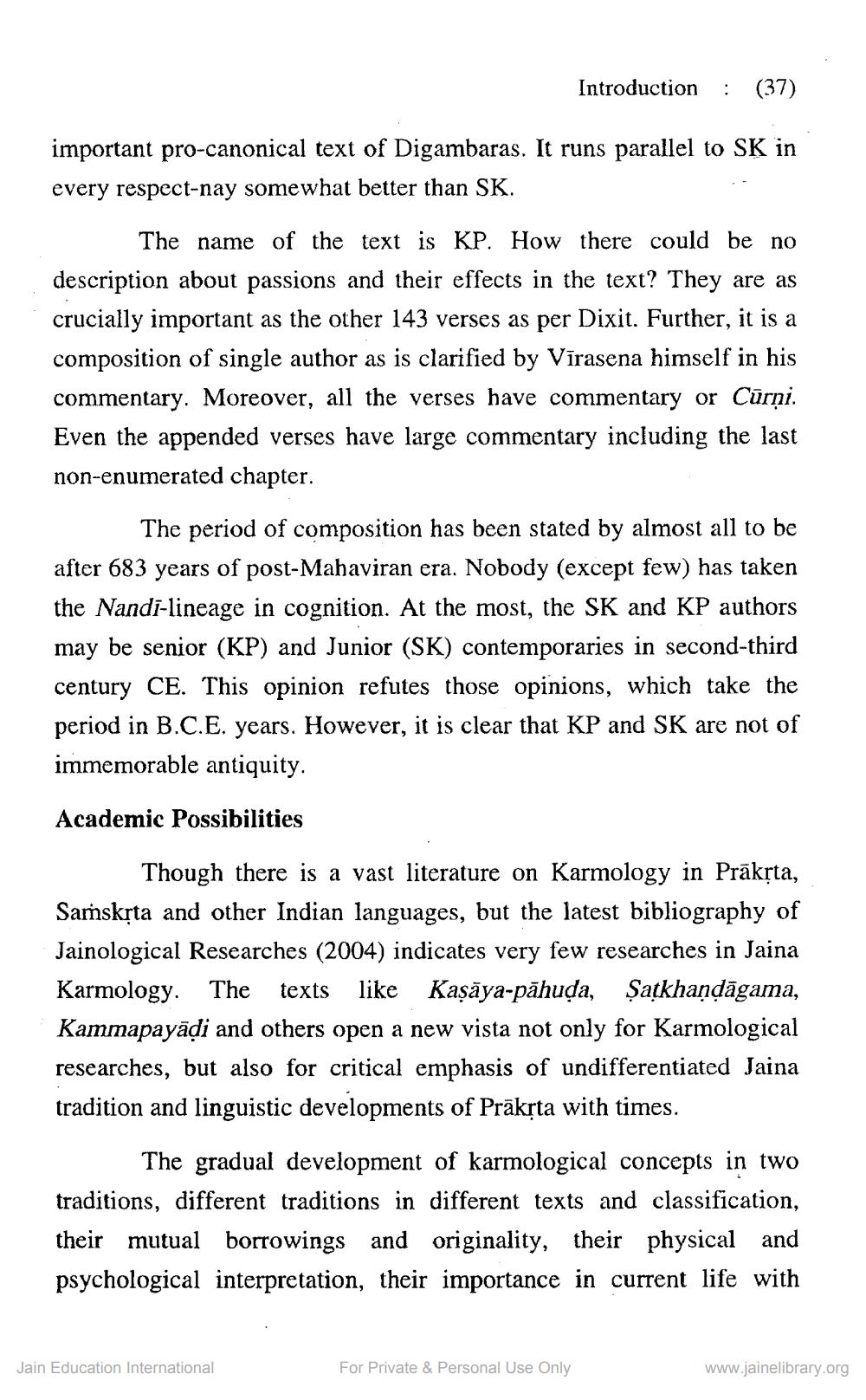________________
Introduction
:
(37)
important pro-canonical text of Digambaras. It runs parallel to SK in every respect-nay somewhat better than SK.
The name of the text is KP. How there could be no description about passions and their effects in the text? They are as crucially important as the other 143 verses as per Dixit. Further, it is a composition of single author as is clarified by Vīrasena himself in his commentary. Moreover, all the verses have commentary or Cūrņi. Even the appended verses have large commentary including the last non-enumerated chapter.
The period of composition has been stated by almost all to be after 683 years of post-Mahaviran era. Nobody (except few) has taken the Nandi-lineage in cognition. At the most, the SK and KP authors may be senior (KP) and Junior (SK) contemporaries in second-third century CE. This opinion refutes those opinions, which take the period in B.C.E. years. However, it is clear that KP and SK are not of immemorable antiquity.
Academic Possibilities
Though there is a vast literature on Karmology in Prāksta, Saṁskṛta and other Indian languages, but the latest bibliography of Jainological Researches (2004) indicates very few researches in Jaina Karmology. The texts like Kaşāya-pāhuda, Şatkhandāgama, Kammapayāļi and others open a new vista not only for Karmological researches, but also for critical emphasis of undifferentiated Jaina tradition and linguistic developments of Prāksta with times.
The gradual development of karmological concepts in two traditions, different traditions in different texts and classification, their mutual borrowings and originality, their physical and psychological interpretation, their importance in current life with
Jain Education International
For Private & Personal Use Only
www.jainelibrary.org




